Launching a pharmaceutical product has never been easy, but in years past it was certainly simpler. The days of focusing singularly on high-decile prescribing docs and sending out an army of sales reps are a distant memory. Today’s marketers must establish a value story for physicians, patients, and payer stakeholders, and communicate that value effectively. There are more channels, more data, and less physician accessibility, all of which bring more challenges and complications to the launch pad.
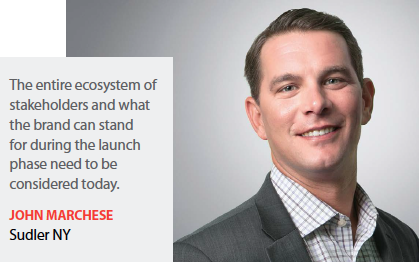 Our experts discuss the overall challenges of launching a product in today’s complex marketing landscape, as well as calling out the specific challenges behind today’s necessary focus on payers and rare disease audiences.
Our experts discuss the overall challenges of launching a product in today’s complex marketing landscape, as well as calling out the specific challenges behind today’s necessary focus on payers and rare disease audiences.
According to a recent McKinsey’s report, launch teams need to invest significant time with patients and caregivers early in the launch process to understand their journey and the barriers they might face in accessing treatment. For example, setting up a social media platform can prove valuable to patients who are geographically scattered, enabling them to share experiences and create a sense of solidarity.
Among the many challenges facing marketers, the first one that must be met is a willingness to recognize that launching a product today requires a new set of strategies.
“The single biggest challenge right now is everyone knows an evolution needs to take place, but no one has been given the permission to stop doing things the old way and start doing things in a new way," says John Marchese, managing director, Sudler NY. “A launch strategy is no longer just telling a doctor about a new brand and the medication is prescribed. The entire ecosystem of stakeholders and what the brand can stand for during the launch phase need to be considered today."
Today, marketers not only need to understand what motivates physicians, but also patients and payers, as these groups have a much larger stake in healthcare decision-making today. The development of more rare disease treatments is also changing launch 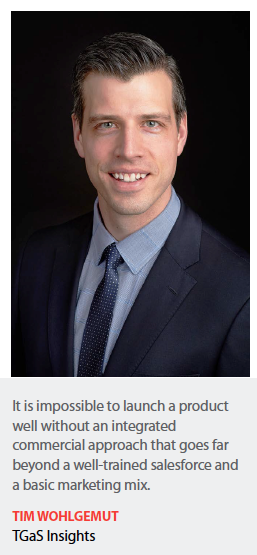 strategies, as targeting for rare diseases requires a solid knowledge of smaller groups of patients who suffer from very unique conditions.
strategies, as targeting for rare diseases requires a solid knowledge of smaller groups of patients who suffer from very unique conditions.
“The biggest challenges today are finding ways to not follow yesterday’s playbook," says Jamie Sidore, VP, managed markets, QuintilesIMS. “Brand leaders all talk about ‘doing it differently’ and adapting to the realities of 201X, but when crunch time comes with an FDA approval, often different thinking goes out the window and the one-size-fits-all launch plan from 2005 gets dusted off and implemented because it’s just easier that way."
Doing it the old way may be easier, but not more effective. The challenges facing marketers today make every element of the launch critical, and reverting backward will not position the product in the best competitive light for launch. Silos need to be dissolved, planning needs to occur early and cross-functionally, and stakeholders on all sides are the driving force of the message.
Today, it is impossible to launch well without an integrated commercial approach that goes far beyond a well-trained salesforce and a basic marketing mix, says Tim Wohlgemut, senior VP, TGaS Insights. Payers, medical, hub, trade, reimbursement, patient support, multiple field teams and multichannel marketing all need to work together as a cohesive commercial model. The relative importance of each of these elements shifts from asset to asset, so there are a wide variety of commercial models today, and marketers need to understand them all well to be effective, he says.
Much of the advice pharma marketers receive when contemplating a new launch strategy that works in today’s ecosystem includes: be disruptive, be patient-centric, explore the value of population health on the reimbursement groups, and create a digital plan to engage patients. All these elements are very critical to the success of the product launch and, yet, both McKinsey and Bain report that more than 50% of product launches fail to meet expectations, says Joy Morrell, president, JMorrellGroup.
What are companies failing to see?
“Simply stated, good planning leads to the right results," Ms. Morrell says. “There’s no secret sauce, just strategic thinking around connecting the dots between pertinent data points."
Launch teams that can integrate the pieces together will be closer to a winning strategy than those who do not. (Editor’s Note: For more information on the important elements needed in a winning strategy, see our digital bonus content.)
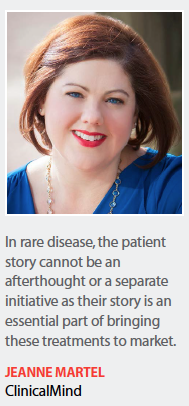 Collaboration between the commercial/marketing teams and medical/scientific teams is also a critical ongoing process when preparing for launch and is something that is often lacking, especially in companies that are launching their first product.
Collaboration between the commercial/marketing teams and medical/scientific teams is also a critical ongoing process when preparing for launch and is something that is often lacking, especially in companies that are launching their first product.
“In those cases, the organizations themselves are undergoing transitions from being science-only companies to commercial ones," says Jeanne Martel, president and partner, ClinicalMind LLC. “A strong, integrated message and plan will make for the most impactful launch."
When both the commercial and the scientific groups feel the product story needs to be told from their point of view, it can be difficult to come to a common version of the brand story.
“The communication and debate regarding how to tell the corporate story, as well as deliver the product’s scientific story, must begin in the early stages of planning," Ms. Martel says. “Creating cross-team buy-in on this process and mapping out the scientific data available to support the messaging will go a long way toward supporting the tactics that come later."
This concept extends to all groups within the cross-functional team, including agencies and other key partners.
The Stakeholders
There’s no argument that payers have become an important stakeholder in the launch process, and pharma companies are adjusting their strategy to include them early and often. Payer relationship management accounts for an average of 26% of surveyed global pharmaceutical and medical device companies’ total market access budget, according to a recent study by business intelligence provider Cutting Edge Information.
Surveyed pharmaceutical companies interact with payer groups before, during, and after product launch. Ideally, global market access teams may prefer to engage payers as early as 10 months ahead of a scheduled launch, the study found. Realistically, however, this timeline falls closer to five months prior to products’ market entries.
The study found that surveyed pharmaceutical teams report making payer relationship activities a top priority among the many other market access responsibilities they undertake. These frequent interactions with payers help dedicated teams to understand payer perspectives, and according to the study, are beneficial both during and after products reach the marketplace.
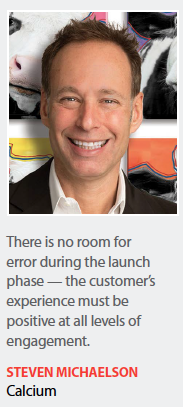 Ahead of launch, ample communications with payer groups help companies increase their odds of ensuring product access in target markets. After launch, market access teams continue to nurture these important relationships, serving as an informational resource to help circumvent potential product challenges.
Ahead of launch, ample communications with payer groups help companies increase their odds of ensuring product access in target markets. After launch, market access teams continue to nurture these important relationships, serving as an informational resource to help circumvent potential product challenges.
“If companies don’t know how their product launch will be perceived by payers and how it helps or hurts payer objectives, then the company doesn’t have a viable launch plan," Mr. Wohlgemut says. “To address this, many companies are hiring or involving payer expertise earlier than ever before in the launch planning stages."
TGaS has performed its own survey and discovered that point-in-time feedback isn’t enough to keep the launch plan on track, because payer priorities and the options available to them can change quickly.
“Not only do companies need to know what payers think and how they would react today, they also need to know how to collect the data needed to ensure that when the landscape changes, they are aware of it," he says.
The constant shift of power from the prescriber to the payer and now more than ever to the provider — IDNs and ACOs — will require pharmaceutical companies to find new ways to work in increasingly restrictive payer environments and be prepared for discussions around value-based pricing, says Mark Stevens, chief strategy officer, Publicis.
“Prescribers have progressively lost their individual decision making power on use of launches, ceding influence to the payers and providers," he says. “However, there are small segments of specialists who are still influential to help with the launch trajectory and they need to be identified."
 Mr. Stevens also suggests exploring pricing options that can be novel and sometimes unconventional that will translate clinical evidence into convincing arguments to support early decisions with P&T members and others in power. Using real-world data to create real-world evidence will help in protecting pricing value stories for the life of the product. Exploring companion diagnostics options showing fiscal responsibility in selective responsive disease management can also boost payer acceptance.
Mr. Stevens also suggests exploring pricing options that can be novel and sometimes unconventional that will translate clinical evidence into convincing arguments to support early decisions with P&T members and others in power. Using real-world data to create real-world evidence will help in protecting pricing value stories for the life of the product. Exploring companion diagnostics options showing fiscal responsibility in selective responsive disease management can also boost payer acceptance.
Payers and the resulting access environment are the most important variables to launch success, Mr. Sidore says. While pricing and clinical differentiation are influential in success of the launch, without access and affordability, the brand won’t even get off the ground, he adds.
“Think about the three As of access, affordability, and actionability," Mr. Sidore says. “First, companies need to secure access so that they can communicate confidently and be sure that prescribers will be able to write the drug and have it approved."
Second, launch teams need to have a plan to make the drug affordable for patients, whether this means copay support, a patient assistance program, a coverage bridge program, trial vouchers, or multiple aspects of the various options.
The variation in access and affordability creates differential opportunities for actionability or pull-through. This is where marketers, Mr. Sidore says, need to determine where the payers combine for depth of coverage, and where the drug is largely blocked out. Another tough decision is determining which patients with access should be pursued and which ones might not be financially viable.
Most of all, the industry needs to link the knowledge of these factors back into the forecasting and goal setting for launch brands, Mr. Sidore says. While there is broad recognition of the three As, often the forecasts that drive incentives and planning are set using top-line assumptions, macro trends, and are highly divorced from the realities on the ground.
“Having a bottom-up forecast for launch, built off market access, affordability, and pull-through actions, helps prevent huge disconnects between what gets budgeted and what gets achieved," he says.
When the barriers to accessing a drug are too high, it may not get to the patients who really need it, says Ryan Roberts, CEO, Elandas. Payers have expectations that a new drug will improve outcomes, efficacy, safety, and pharmaeconomics, and that manufacturers will have robust clinical studies and economic models to prove the value. Because of this, understanding and meeting payer expectations should be at the forefront of the strategy and should start as early as the prelaunch phase.
 “It is important to consider individual expectations of key payers and to capture and share insights internally around their expectations and their response to key messaging," Mr. Roberts says. “By sharing these payer insights with the right stakeholders internally, account strategies can be adapted to help gain access for the drug."
“It is important to consider individual expectations of key payers and to capture and share insights internally around their expectations and their response to key messaging," Mr. Roberts says. “By sharing these payer insights with the right stakeholders internally, account strategies can be adapted to help gain access for the drug."
Capturing this key intelligence using a configurable technology solution can provide the launch strategy with ongoing reporting of what level of coverage might be available and how quickly payers are going to review the new brand.
“The more you know about the collective and individual expectations of payers, the better chance you have of meeting them," he adds.
The solution is to facilitate communication between all commercial teams, Mr. Roberts says.
“All customer-facing teams play a huge role in sharing customer and competitive insights to help the launch team understand what’s working and what’s not," he says. “This affords marketers the opportunity to make tactical adjustments, by learning details that might impact uptake, such as common objections, competitor angling, message impact, and the accuracy of access and forecasting assumptions."
Having access to day-to-day intelligence to enable agility is important at launch. Waiting on third party data to become available to uncover issues can be detrimental to the launch. Plus, data spreads without context or detail makes it pretty hard to know, he adds.
Focus on Sales
 Sales teams also need insights from each other and marketers to execute on strategies that can move the needle. For instance, field sales teams need to be alerted when access changes affect their territories.
Sales teams also need insights from each other and marketers to execute on strategies that can move the needle. For instance, field sales teams need to be alerted when access changes affect their territories.
“The last thing they want is to get doctors excited about their drug and not have access," Mr. Roberts says.
In an environment where more than 50% of physicians restrict rep access, 60% of doctors are part of an IDN, and 25% of all physician interactions are digital, it is clearly time to reimagine the value of the sales representative, says Deborah Schnell, VP, managing director, Taylor Strategy Partners.
“The healthcare landscape has changed dramatically in the last five years and will continue to evolve," she says. “We cannot expect the sales tools of the past to deliver the talent of the future."
For today’s sales rep, product knowledge and in-territory HCP relationships are no longer sufficient qualifiers for success, In today’s changing environment, effective sales reps need to make the “total" office call often educating on rare or complex diseases, providing service and/or direction on how patients can get the therapy, assisting the practice in navigating reimbursement, and supporting the patient advocacy group. Therefore, comprehensive target profiles have never been more important and must be built to not only include the competencies and characteristics needed to succeed, but the cultural alignment as well.
“According to a recent Harvard Business Review article, cultural fit trumps competency every time, and yet few organizations know how to accurately assess candidates for cultural fit," Ms. Schnell says, referring to hiring sales reps. “Success is delivered by hiring the best people and talent and that starts with a finely tuned profile and well delineated cultural attributes."
Ms. Morrell also suggests a clear blueprint for the execution team that includes the reason for the strategy chosen.
“Don’t expect success of a plan without the strategic and transformational prologue explaining the why, helping to guide sales partners to overcome the challenges at the point of sale," she says.
 As physicians face a market increasingly oversaturated with information and communication, the challenge is delivering pertinent information to physicians in impactful ways. Solutions include using more targeted platforms and utilizing the moment of care to share relevant treatment information in the very place where providers and patients need it, says Katherine Calvert, senior VP, marketing, Outcome Health.
As physicians face a market increasingly oversaturated with information and communication, the challenge is delivering pertinent information to physicians in impactful ways. Solutions include using more targeted platforms and utilizing the moment of care to share relevant treatment information in the very place where providers and patients need it, says Katherine Calvert, senior VP, marketing, Outcome Health.
“What’s exciting about advances in measurement and technology is that brands can focus on measuring the outcomes that matter, such as adherence and adoption," she says.
Brand marketers need to start a personalized dialogue with physicians that will break through the influx of new product information, says Denis Wyrwoll, VP, business intelligence, Healthcasts.
“Getting the medication to the hands of the patient is always the goal, so educating providers with quick access updates that affect their patient pool will enhance their ability to prescribe the product," he adds.
To make appropriate decisions regarding resources, marketers also need to know local market conditions, Mr. Sidore says. For instance, deciding how to allocate sales calls, promo budgets, speakers, symposia, etc., requires knowledge of which markets are controlled by integrated delivery/health networks and who is the key protocol decision-maker, and what markets have lots of physician autonomy where more traditional commercial efforts would work best.
This issue is what TGaS describes as Launch Catch-22. While commercial spend is often restricted due to regulatory uncertainty early on, if teams wait too long until there is more certainty, launch effectiveness will be compromised. Executives in small and  precommercial companies must weigh each spending decision in a more precarious environment than larger companies with existing infrastructure.
precommercial companies must weigh each spending decision in a more precarious environment than larger companies with existing infrastructure.
“Every company of every size faces this issue. It can’t be avoided," Mr. Wohlgemut says. “But there are things successful companies do to manage it. Our research clearly shows that they really do act differently than those that aren’t successful."
Research shows that the same commercial experts who are responsible for launch are given the opportunity to have an impact on the launch strategy and plan.
Mr. Wohlgemut says those who own the result get a say in the plan. Successful launches also stem from companies investing earlier in customer-facing activities, roles, and capabilities.(PV)
~~~~~~~~~~~~~~~~~~~~~~~~~
Rare Disease Launch Strategy
As the industry focuses on developing products for rare disease indications, product launch strategies are shifting to align with this particular audience. Therapies for rare diseases are becoming a top priority for an increasing number of pharmaceutical and biopharmaceutical companies, as well as for the FDA. Nonetheless, there are many issues to manage when bringing a therapy for a rare disease to market. These include a lack of natural history studies, small patient pool and trial size, identification of validated biomarkers, disputed efficacy end points, assurance of its safety profile, and the question of what to do with patient experience data.
There are certain strategies for products that treat rare diseases, such as implementing a comprehensive plan to identify potential patients using RWD or advanced artificial intelligence/machine learning algorithms. According to Mark Stevens, chief strategy officer, Publicis, the use of genetic profiling will also be widespread and in many cases there is the potential that many patients are not even diagnosed yet.
“Launch sequence will be important where the areas/countries with the highest prevalence can provide instant real-world evidence on the efficacy, and this could also mean smaller individual launches to manage expectations," he says. “Understanding early on the clinical trial landscape and KOL networks to optimize trial design to include key markets and clinical centers of excellence for the disease state is essential."
Using correct tactics and channels are critical to reaching the intended audience. Often, rare and fatal diseases involve many disciplines, so a treatment-team approach can be very impactful.
“We typically recommend highly personal programs and less nonpersonal marketing in these cases due to the need to build relationships and create trust as we disseminate the scientific story for the product," says Jeanne Martel, president and partner, ClinicalMind LLC.
Educating providers on how to identify appropriate patients for treatment will be a very important part of the communication plan and strategy to ensure that the market is ready at launch. Also, educating providers on what will be necessary for this treatment in terms of delivery mechanism and necessary follow-up will help them to prepare for faster uptake of this product once it’s approved, she adds.
John Marchese, managing director, Sudler NY, says education becomes more critical and must be at a higher level than for non-rare diseases. Neither physicians nor patients have experience in these rare diseases, so a strategy must include time, energy, and money to educate them to maximize their own efforts. Another difference in strategy would be the precision in which patients need to be targeted. “It is not a shotgun approach to marketing at all, and that’s really where you get into using data to identify where these people are, where the challenges are in managing these diseases," he says. “Support is always at the front and center and it needs to be comparable with the level of support patients receive in rare diseases."
Reach and frequency as a model doesn’t make sense in a rare disease world or for any specialty, super-specialty, rare oncology, or immune-oncology program, says Tim Wohlgemut, senior VP, TGaS Insights.
“Payers and patients are weaving their way closer to the center of every commercial model in a multitude of ways," he says. “That means the data being collected, the analytics being conducted, the tactics being deployed, and the capabilities that need to be built are all impacted."
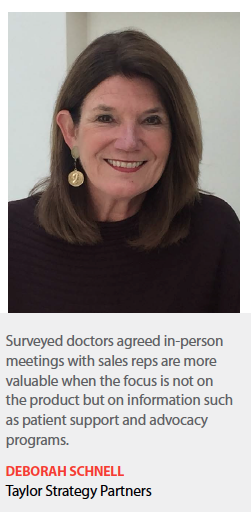 Launching a product for a rare disease requires even more attention on a well-defined patient profile, and more urgency around developing focused strategies for reaching those patients and their physicians, says Katherine Calvert, senior VP, industry marketing, Outcome Health.
Launching a product for a rare disease requires even more attention on a well-defined patient profile, and more urgency around developing focused strategies for reaching those patients and their physicians, says Katherine Calvert, senior VP, industry marketing, Outcome Health.
“Because the patient populations for these diseases are small, traditional DTC campaigns that reach the masses might not make sense for brand marketers from an ROI perspective," she says. “Contextualized marketing messages delivered in the minutes before, during, and after an affected patient meets with their physician is a much more effective way to deliver brand impact."
The patients and their caregivers are important in any launch in any category, but science and patients drive a bit more of the strategy in rare disease launches.
“The key dynamic of rare disease markets is driven by the size of the patient population and interconnectedness," says Steven Michaelson, CEO, Calcium. “So, while there is nothing inherently different in the ways and hows of products launched into the space, the markets themselves are often a tightly interwoven community of treaters, patients, caregivers, advocacy organizations, and industry professionals."
For brands to effectively enter these communities they must be authentic in their interactions and behaviors within the community, because these communities are tight, and news travels fast, both good and bad.
“There is no room for error — the customers’ experience must be positive at all levels of engagement and, if you make a mistake, immediately acknowledge it and publicly take steps to correct it," Mr. Michaelson says.
It’s imperative to treat these groups as the tight-knit communities they are, and not misinterpret them as simply segments or categories. The industry wants to be viewed as a responsible member of the community, and can do so by being transparent about why and how it is doing things. This is not the place for advertisements, but for building relationships. And above all, companies, as the experts, should be shaping the understanding of the disease state.
Technology plays a big role in connecting the benefits of innovative therapies to patient populations who may not be aware of them. At Outcome Health, brands using the point-of-care platform have experienced, on average, a 14% lift in new prescriptions.
“Being able to reach your patient-physician universe in a targeted way means you’re able to directly impact positive patient outcomes," Ms. Calvert says.
On the sales side, smaller, geographically dispersed sales teams make it challenging for field sales management to train, coach, and course correct to ensure maximum results, says Deborah Schnell, VP, managing director, Taylor Strategy Partners.
In a 2015 global study of 79 brands, it was determined that the launch trajectory is now set in the first 12 weeks, versus the historical six to nine months. Additionally, in a recent Harvard Business Review article it was found that just 90 days after launch, 80% of all prelaunch product information is forgotten.
“Employing technology to support just-in-time coaching and training will be essential for success," Ms. Schnell says. “Traditional ride-along coaching and training will not go away, but neither will it adequately address the need for more efficient communication. It is the combination of traditional means with technology/video for course correction and reinforcement that will deliver max results."(PV)

















